Butterfly Observatory
Our Observatory is the largest enclosed structure of its kind in Central America and is a spacious habitat and breeding ground for over 25 species of butterflies from Costa Rica. The reproduction laboratory offers an educational perspective into the stages of development of the most popular species found in the country. With over 4,000 of these flighty creatures in the Observatory at any one time, you will be delighted by these colorful and fanciful creatures flying all around you. You will also be able to see and photograph them up close as they land and feed on the flowers and fruit feeding stations.
The spacious glass and acrylic design of our Butterfly Observatory allows our guests and day visitors the opportunity to enjoy the butterflies no matter what Mother Nature has in mind for the weather outside. Our laboratory allows guests to see the butterflies up close as they emerge from their chrysalis or in the larval stages of their growth cycle.
Diversity
In Costa Rica there exists a great diversity of tropical habitats; this diversity is reflected in the great variety and abundance of butterflies. Approximately 90% of the butterfly species in Central America exist in Costa Rica, nearly 66% of neo-tropical butterflies and about 18% of all butterfly species of the world.
Our butterfly garden allows our visitors to see the female butterfly mating and depositing her eggs on the leaves of her host plant. In addition, our extensive butterfly educational signage and videos explain the lifecycle and metamorphosis in simple terms and allow our visitors to see firsthand the various stages of the lifecycle. The International Association of Butterfly Producers voted our Butterfly Conservatory the best in the world.
The Life Cycle of the Butterfly
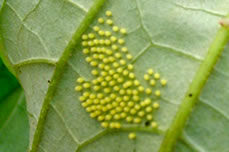
Egg
The female butterfly deposits its eggs on the host plant. The egg is the first cycle of life and is also the most vulnerable period, largely due to their major predator, the parasitic wasp.
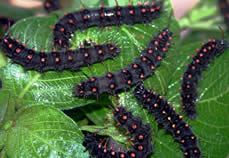
Larva
From the egg is born a caterpillar which eats only vegetable matter, digests, and grows over a period of 10-60 days. During this time they shed their skin (molt) four to six times.
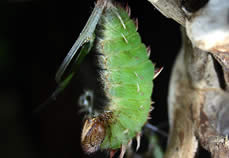
Pupa or Chrysalis
When fully grown, the caterpillar hangs itself from a branch or leaf of a host plant and undergoes its final molt. The least amount of information is known about this stage. When fully developed, the chrysalis changes color and splits within one to two days into the adult.
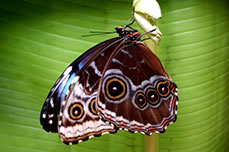
Adult Butterfly or Imago
Butterflies are insects that have four wings, two compound eyes of various parts and six legs. The butterfly uses its antenna to touch and smell; they drink nectar from flowers with their mouth in the form of a tube, called a proboscis. When they are not eating, this tube is rolled into a spiral. Most butterflies live approximately 3 weeks and they move their wings at a velocity between 460 and 630 beats per minute.
Survival
In nature, on average only 5% of butterfly eggs reach adulthood and the remaining 95% are lost to predation or other natural causes. In our butterfly program, we are able to provide a safer environment and over 55% of the eggs are able to reach adulthood. In this way, we can maintain a stable population of butterflies in our observatory.
Life of a Butterfly in PDF Flipbook
Butterfly Observatory
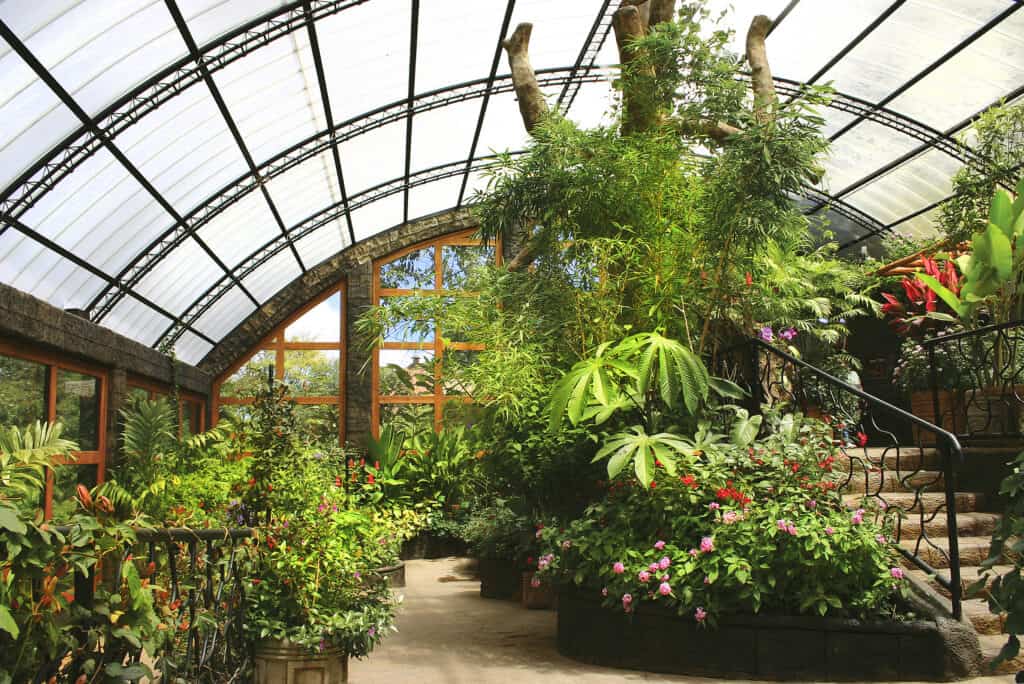
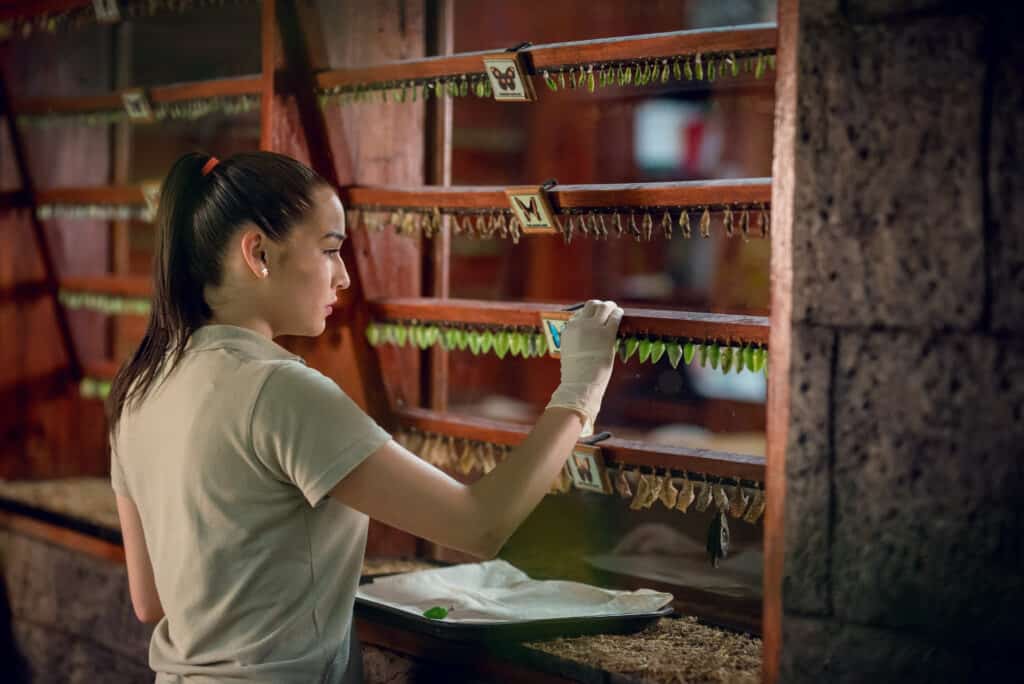
Once our visitors have walked the trails and visited the Butterfly Observatory and Hummingbird Gardens, we usually hear, “Can you believe the butterflies and hummingbirds?” Yes, the waterfalls are magnificent, but the butterflies are unbelievable. With our oversized observatory, our guests feel a part of nature, without feeling as though they are intruding.
Since we are located in the Rainforest, we have recently enclosed our Butterfly Laboratory, so our guests will be able to enjoy their interaction with the butterflies, even when the weather is not cooperating.
Our on-site guides will walk you through the observatory, pointing out eggs, caterpillars and the camouflaged chrysalises.
Species at Waterfall Gardens
The number and types of butterflies are constantly varying at Waterfall Gardens. Although we produce some of our own butterflies, to prevent genetic problems, we introduce butterflies from alternate resources. All of our butterflies are indigenous to Costa Rica. However, some do better at the higher altitude (Waterfall Gardens is almost 5,300 feet high) than others.
To see more details about the butterfly species at the waterfall gardens click below on any image.

